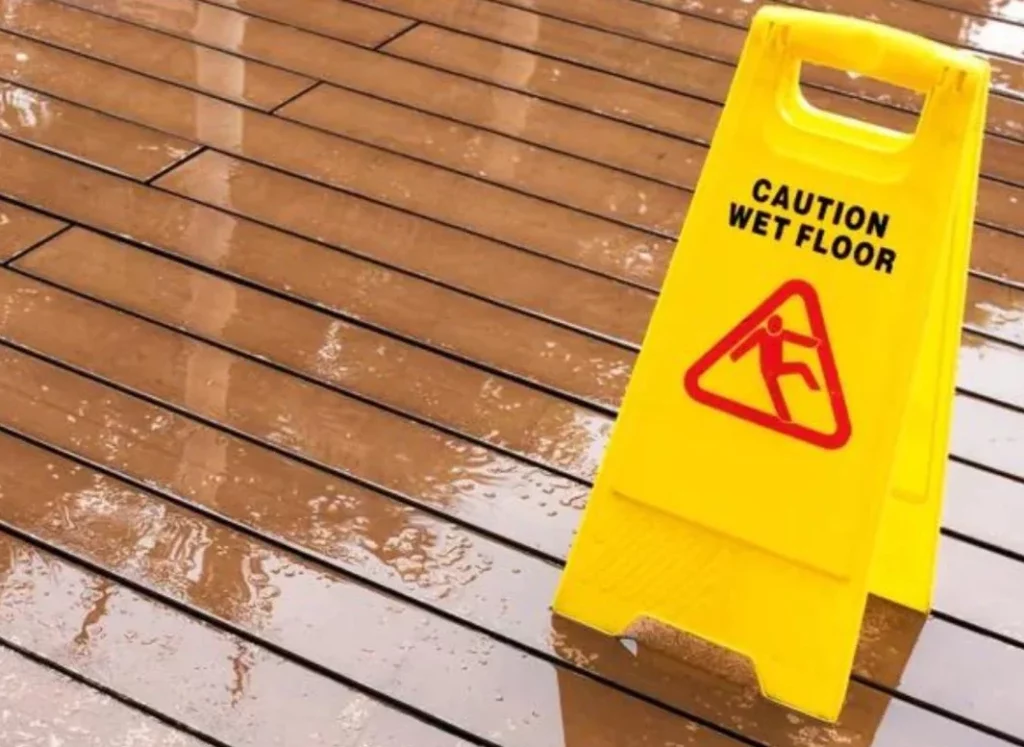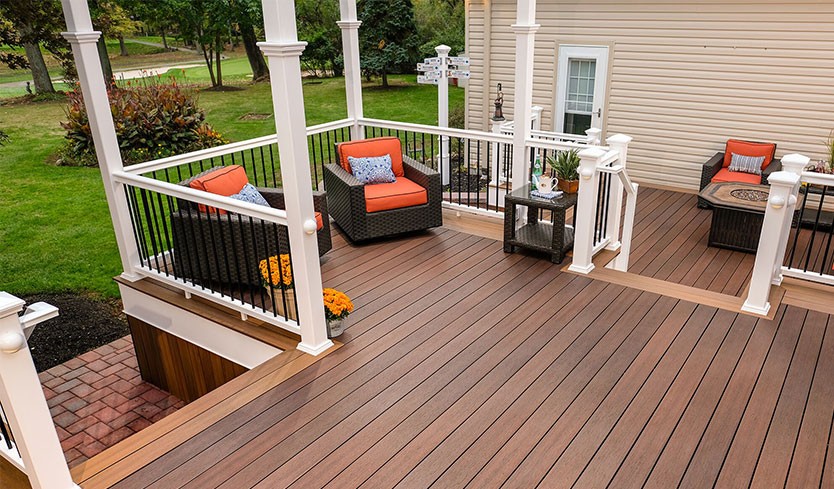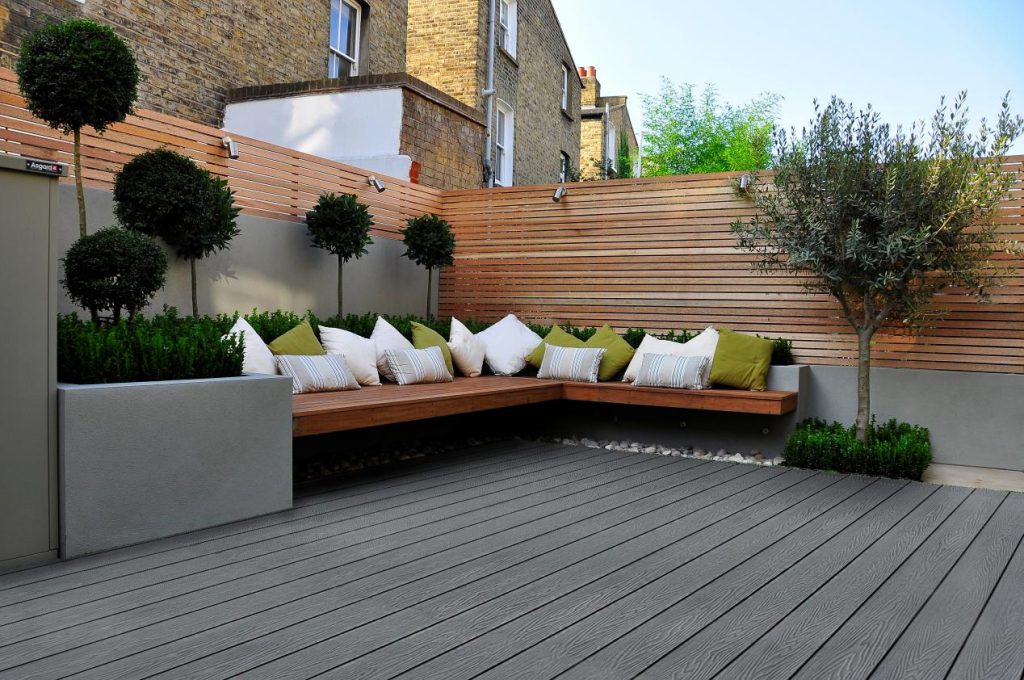When homeowners consider upgrading their outdoor spaces, one common question always arises — is composite decking slippery? Whether it’s around a pool, patio, or garden walkway, the surface texture and grip of your decking matter greatly for both safety and comfort. While composite decking is celebrated for its durability, low maintenance, and modern appearance, slip resistance is a crucial factor that shouldn’t be overlooked. In this detailed guide, we’ll explore how slippery composite decking can be, especially when wet, what influences its traction, and how to choose or maintain a deck that keeps you safe in every season.
Table of Contents
Understanding What Makes Decking Slippery
Although the question “is composite decking slippery?” seems straightforward, the answer depends on several factors. Slipperiness isn’t simply a property of the material itself—it’s the result of texture, moisture, wear, and environmental conditions. Composite decking is made from a mix of wood fibers and plastic, which provides a non-porous surface that resists mold and algae better than timber. However, like any surface, when it accumulates water, dust, or mildew, its friction can decrease.
What’s important to know is that modern composite decking is designed with anti-slip features. Manufacturers now include embossed wood grain textures or special brushed finishes to enhance traction. Some even test their boards to meet international slip-resistance standards. So, if you’ve heard that composite decking is slippery when wet, that may apply to older generations of composite materials, not the advanced capped boards available today.

Is Composite Decking Slippery When Wet?
This is one of the most frequent questions asked by homeowners, especially those installing decks near swimming pools, hot tubs, or in rainy climates. The short answer is: composite decking can become slightly slippery when wet, but much less so than traditional wood.
Natural timber tends to absorb water, swell, and develop algae or moss, which significantly reduces traction. Composite decking, on the other hand, has a closed surface that repels moisture. While water can still make the surface slick temporarily, most quality composite brands feature a textured or embossed top layer that provides grip even under wet conditions.
For instance, capped composite decking—where a polymer shell wraps around the core—offers enhanced slip resistance because the cap layer is engineered to remain stable and less prone to algae buildup. Additionally, some manufacturers apply micro-grooved or sanded finishes to further improve safety.
If you live in a region with frequent rain, choosing a decking board with a high slip-resistance rating (such as R11 or R12 under the DIN standard) can make a noticeable difference. These ratings are typically indicated in product specifications and are worth checking before purchase.
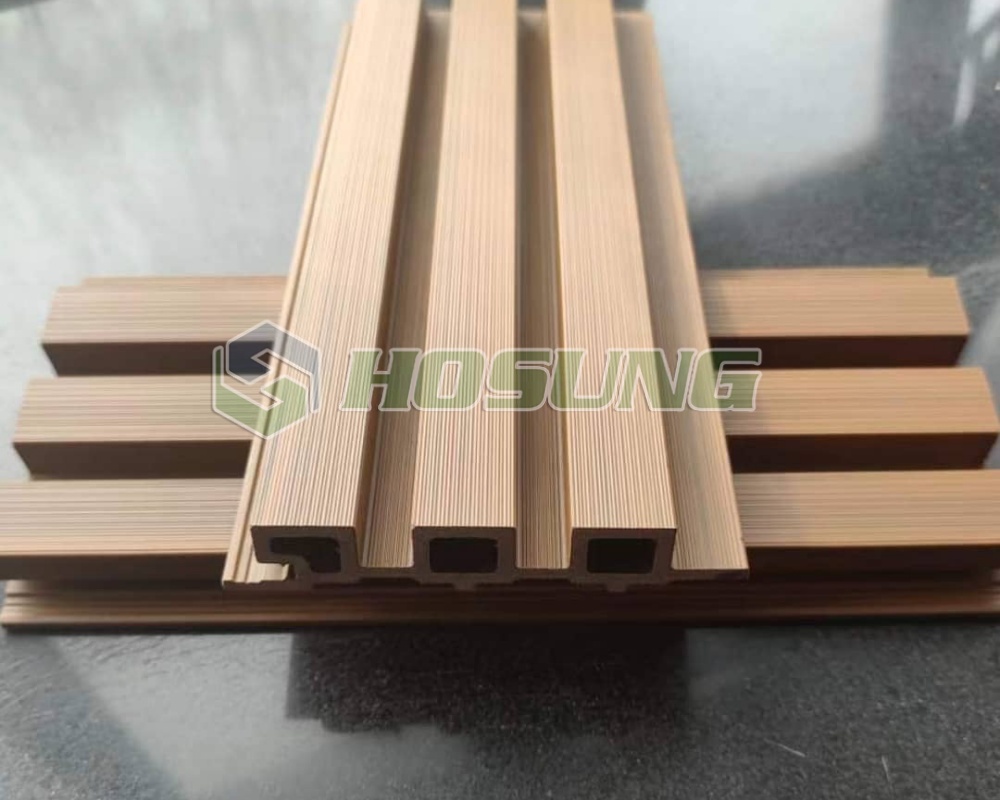
The Role of Texture and Finish in Slip Resistance
One of the key factors determining whether composite decking is slippery lies in the texture and finish of the board surface. Smooth surfaces tend to lose traction quickly when wet, while embossed or grooved designs provide better friction.
Wood-grain embossing not only adds aesthetic appeal but also contributes to grip. Some decking boards mimic the texture of natural wood, creating micro-ridges that channel water away and reduce the risk of slipping. Grooved decking, on the other hand, offers deeper channels that help drain water efficiently—ideal for poolside areas or garden paths.
When comparing brands, pay attention to their slip-resistance test results. Boards with higher Coefficient of Friction (COF) values provide better grip. For example, a COF above 0.5 is generally considered slip-resistant under most building standards. Many leading composite decking products achieve or exceed this rating, proving that advanced manufacturing has made a significant difference in safety performance.
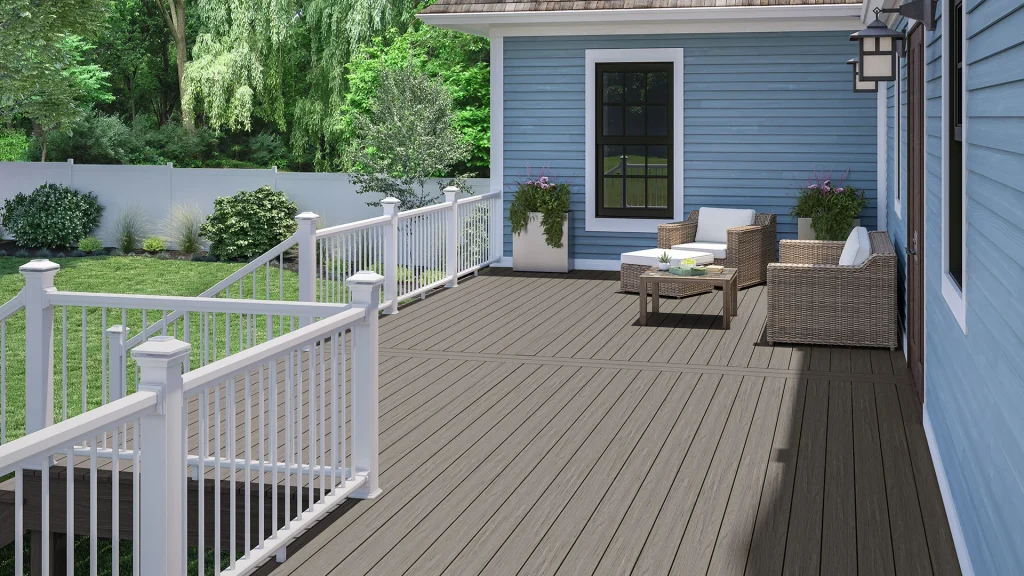
Weather and Environmental Factors Affecting Traction
Even with well-textured boards, external factors play a big role in determining whether your composite decking is slippery when wet. Areas that are shaded, exposed to humidity, or near water bodies can accumulate moisture and organic matter such as leaves or pollen. Over time, these create a thin film on the surface that reduces grip.
In winter, frost and ice can also create temporary slipperiness on any surface, including composite decking. Fortunately, composite materials are less likely to splinter or crack under freezing conditions compared to wood, and de-icing products such as calcium chloride can safely be used on most boards without damaging the surface.
To maintain maximum traction year-round, regular cleaning is essential. Simply rinsing the surface with water and using a mild detergent to remove dirt buildup can restore its original slip-resistant texture. Homeowners in humid or coastal areas may need to clean their decks more frequently, especially during rainy months.
Comparing Composite Decking vs. Wood in Slipperiness
When evaluating is composite decking slippery compared to wood, the contrast becomes quite clear. Traditional wooden decks—especially when untreated—can quickly become hazardous after rain or snow. The porous nature of wood allows moisture to penetrate the surface, leading to algae, moss, and rot. Over time, the surface becomes smooth and slimy, posing a serious slip risk.
Composite decking, in contrast, offers consistent performance and easier maintenance. The material doesn’t absorb moisture, making it much less likely to foster slippery growth. Even without frequent sealing or staining, composite boards maintain their surface texture and friction level far longer than natural wood.
Moreover, composite boards often feature a dual-sided design—one with a grooved surface for extra grip and the other with a smooth finish for aesthetic flexibility. This allows homeowners to choose the right surface for specific applications. Poolside areas can benefit from the grooved side, while covered patios may use the smoother one.
In summary, while no outdoor surface is completely slip-proof, composite decking offers far superior slip resistance than most timber options, especially when wet.
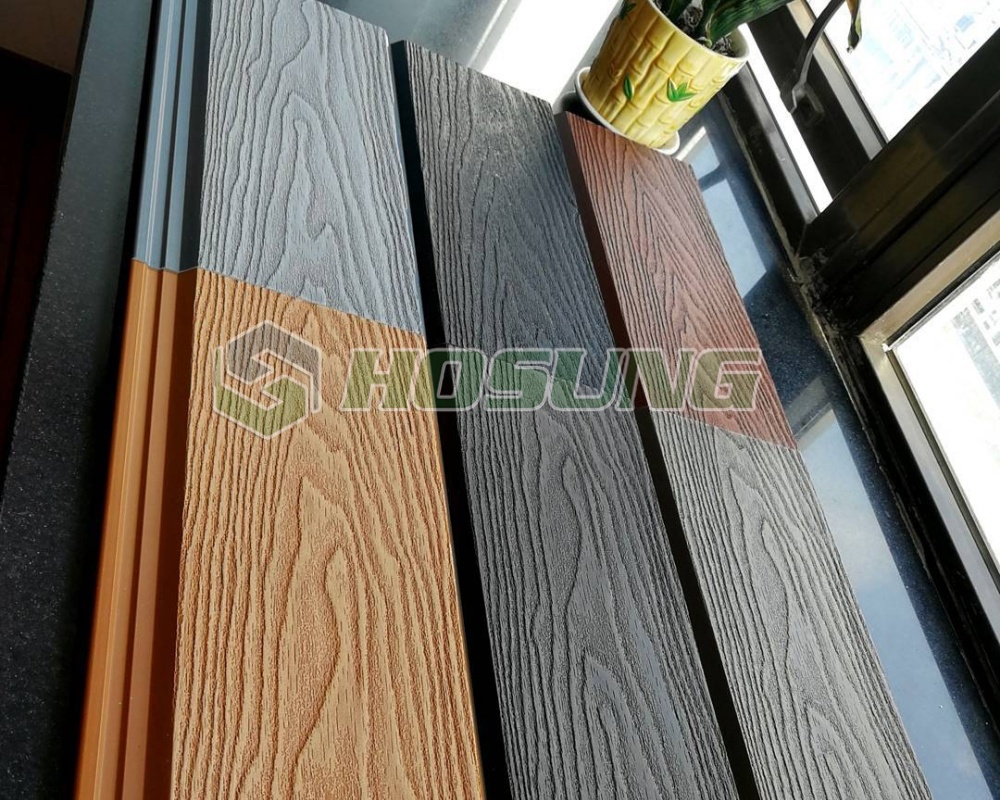
Maintenance Practices to Prevent Slippery Surfaces
Even though composite decking requires less maintenance than wood, periodic cleaning and care remain essential to prevent slipperiness. The accumulation of organic materials like leaves, dirt, or pollen can make any surface slick over time. Here are a few effective maintenance tips:
Regular Sweeping and Washing: Keep the surface free of debris. A gentle wash with a soft-bristle brush and soapy water every few weeks helps preserve traction.
Avoid Standing Water: Ensure proper drainage beneath and between boards. Standing water can encourage mold growth and temporarily reduce grip.
Use Approved Cleaners: Many manufacturers provide composite-safe cleaning solutions designed to remove mildew without harming the protective cap.
Prevent Algae and Moss Growth: In shaded or damp areas, use mild anti-algae treatments or vinegar-water solutions to deter growth naturally.
Avoid Wax or Oil-Based Products: These can fill the textured grooves and create slippery patches, counteracting the deck’s slip-resistant design.
By following these maintenance habits, you’ll ensure your deck stays safe and beautiful for years without the worry of slippery surfaces.
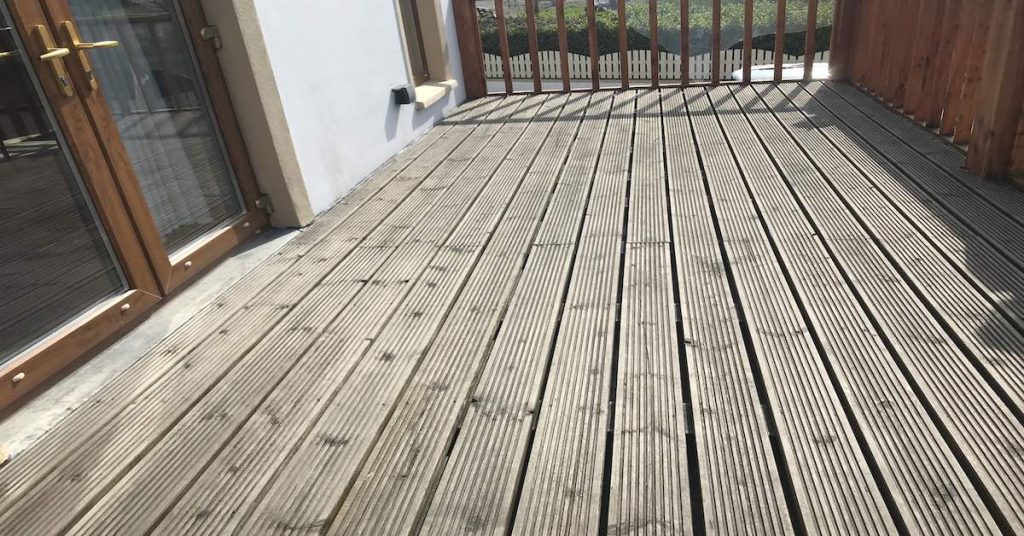
Choosing the Right Composite Decking for Safety
Not all composite decks are created equal. If your main concern is whether composite decking is slippery when wet, it’s wise to choose boards specifically designed for high-traction performance. Look for the following features:
Textured or Embossed Finish: Provides natural friction even in wet conditions.
Deep Grooves or Drainage Channels: Help water flow off the surface quickly.
Capped Composite Layer: Adds a durable, non-porous coating that resists algae and stains.
Tested Slip-Resistance Ratings: Check if the product meets or exceeds local safety standards like ASTM or DIN.
Color Choice: Lighter colors reflect heat and dry faster, reducing water retention compared to darker boards.
Leading composite decking brands often publish their slip ratings, so take time to review these before buying. For pool decks or outdoor kitchens, a higher slip resistance rating is always worth the investment.
Enhancing Deck Safety Beyond the Material
While selecting non-slippery composite decking is the foundation of outdoor safety, other installation and design considerations can further improve traction. The way your deck is built, oriented, and maintained will influence how slippery it feels underfoot.
For example, installing boards with grooves running perpendicular to common walking paths increases grip. Adequate drainage systems should be designed beneath the decking to prevent standing water. In areas prone to wetness, adding slip-resistant mats or outdoor rugs can also be beneficial without compromising aesthetics.
Proper lighting enhances visibility, helping to prevent accidents during rainy or icy conditions. Handrails and textured steps can also improve safety for elevated decks. Combining thoughtful design with quality materials ensures your outdoor space remains functional, attractive, and safe all year long.
Final Thoughts: Is Composite Decking Slippery or Safe for Everyday Use?
So, is composite decking slippery? The honest answer is no, not inherently—certain conditions can make any surface slippery, but modern composite decking is engineered to minimize that risk. With textured finishes, capped surfaces, and smart drainage design, today’s composite decks are among the safest options available for outdoor living spaces.
When wet, they still provide reliable traction compared to traditional wood, and with simple maintenance, you can enjoy a slip-resistant surface for years. Whether you’re building a poolside patio, garden walkway, or rooftop terrace, composite decking strikes the perfect balance between style, safety, and performance.
In the end, the key to a non-slippery deck lies in choosing the right product and maintaining it properly. A high-quality, slip-rated composite board will keep your family and guests safe, no matter the weather. So, if you’ve been wondering “is composite decking slippery when wet?”, rest assured—today’s advanced materials are designed with your comfort and safety in mind.

